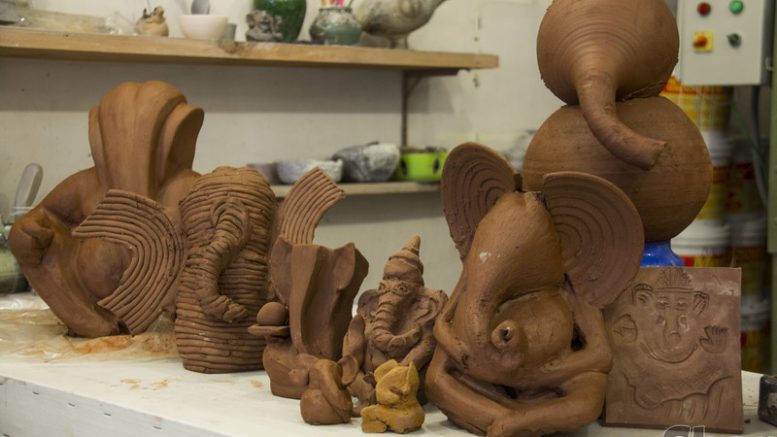Ganesha Habba or Ganesh Chaturthi is one of the most awaited festivals in Bengaluru. Everyone waits to adorn their households with idols of the elephant god and partake in the festivities. Over the years, there has been an increase in people adopting eco-friendly ways to celebrate the festival. In fact, this year, Bengaluru has seen a big colourful idols, instead choosing clay ones that are eco-friendly.
Citizens around the city are stepping up to support the cause.
Seed and plant Ganesha idols
Politician Shilpa Ganesh undertook an initiative to ensure everyone in her area (Rajarajeshwarinagar) tries to adopt a more eco-friendly stance while celebrating the festival. “If we notice, the lakes are the ones that get most affected with these festivals. With the pomp festivities, the immersion of Plaster of Paris (PoP) idols have seen these lakes getting ruined and the ecosystems there getting damaged. A couple of years ago, I’d no clue about this myself. But with the awareness, I realized I should only take the next step in bringing environment friendliness, and organized a Parisara Ganapathi event, where we had as many as 700-800 idols being made in our area. We encouraged families, especially kids, to take part in making their own clay idols, which brought in a personal touch and also helped spread awareness about the environmental damage that we are averting,” she says.
Clay Ganesha idols
Apart from clay Ganesha idols, there are seed and plant Ganesha idols that have become extremely popular this season. These idols, made with clay, are not only eco-friendly, but also help grow more plants in one’s own garden. Vaijayanthi KM of Chinnara Kaithota is one such who has taught over 100 children in around six workshops in the past few weeks to make their own idols.
Workshops for Ganesha idol
“We had a series of workshops in South Bengaluru. The intention behind these workshops was threefold. The first and the most obvious one is to give back to nature with these idols. The second was to teach children to grow their own food. The third, and the most important one, was to revive the old practice of making one’s own Ganesha idol, which is what our traditional practice has been. We are using brinjal, beans and amaranthus seeds in these Ganesha idols,” says Vaijayanthi.
There are also people who are making clay idols with saplings on top, which can then be planted into pots in one’s garden.Apart from these workshops and initiatives, most of the bigger residential complexes are all adopting ways in which they are helping reduce the problems. They have plans of creating common makeshift tanks for residents to immerse idols, instead of looking for lakes. Some apartment complexes are also sending out methods of reducing the pollution by teaching people on how to immerse idols in buckets in their balconies and use the water with dissolved clay in their garden areas.Many apartment complexes are, in fact, encouraging residents to group together and have one common idol for immersion, than having individual ones in their homes, thereby saving a lot of water.
PoP idols:
Saroja K, who is conducting workshops on making simple clay idols, is busy this year as well. Commercially, natural, hand-made clay idols are available, but not as many as one would hope to see. And, hence, after the festivities, we see mounds of broken PoP idols in our lakes, which have toxic paint. My intention is to get people to make their own little idols, so we can avoid pollution,” she says.
The NGO To Make A Difference has been delivering low cost idols to people across Bengaluru. Ranging from nine inch to three feet, the organization undertakes making of clay idols primarily for residents of apartments.
Also read: Essential oils, flowers, bells: Get your home ready for Ganesh Chaturthi




Be the first to comment on "Bengaluru goes eco-friendly this Ganesha habba"